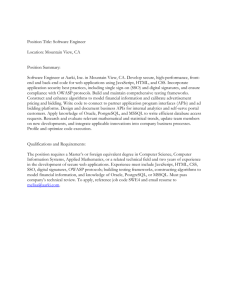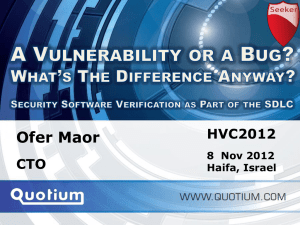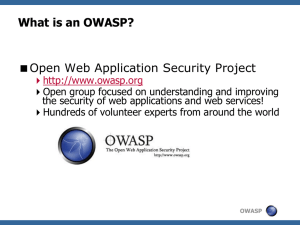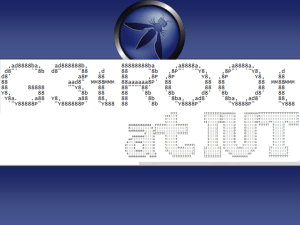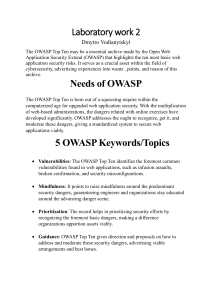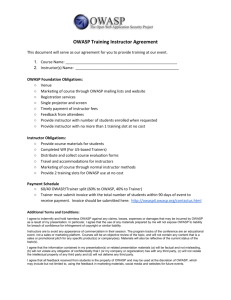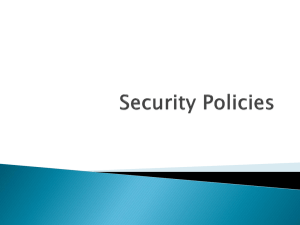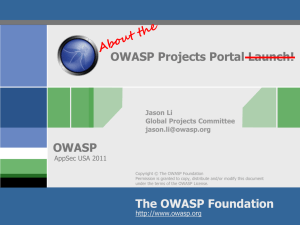Common Web Vulnerabilities
advertisement
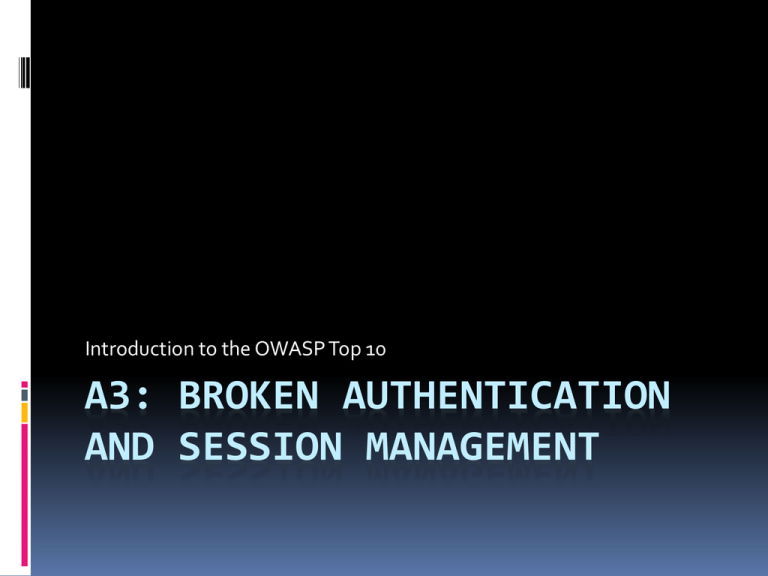
Introduction to the OWASP Top 10 A3: BROKEN AUTHENTICATION AND SESSION MANAGEMENT HTTP is stateless… This means a user’s credentials must be passed with each request Passing credentials creates an opportunity for attackers to steal the credentials URLs, form fields, and cookies offer varying levels of (in)security Encryption First line of defense Encoding ≠ Encryption! Base64 is not secure Use SSL to provide transport layer encryption of logged on sessions And remember… URLs could be exposed as referrer data Any reference not using SSL exposes credentials Example Anyone heard of FireSheep??? Firefox plugin that made it easy to steal logon credentials The technique used is known as SideJacking Exploitation of a session key to gain access to information or services Takes advantage of sites that allow/leak unencrypted session information XSS attacks can also be used to steal session keys SideJacking Scorecard Protection Universally deploy SSL Any content that is brought in unencypted will expose session information! Use an architecture that’s simple, centralized, and standardized… CAS Introduction to the OWASP Top 10 A4: INSECURE DIRECT OBJECT REFERENCES Insecure Direct Object Reference The ability of a user to reference a file or function without permission A failure of authorization control Common Mistake Simply excluding unauthorized functions from menus and options Malicious users can easily tamper with requests to the server URL parameters, form data, cookies Prevention Validate every direct object reference on the server Verify type of access for files Read, Write, Delete Provide indirect references to files OWASP Enterprise Security API (ESAPI) provides tools to do this References OWASP Broken Authentication Wiki Page http://www.owasp.org/index.php/Top_10_2010-A3 SideJacking Scorecard https://www.digitalsociety.org/2010/11/online-services- security-report-card Implementing CAS http://www4.nau.edu/its/sia/ OWASP Direct Object Reference Wiki Page http://www.owasp.org/index.php/Top_10_2010-A4 OWASP ESAPI http://www.owasp.org/index.php/ESAPI


